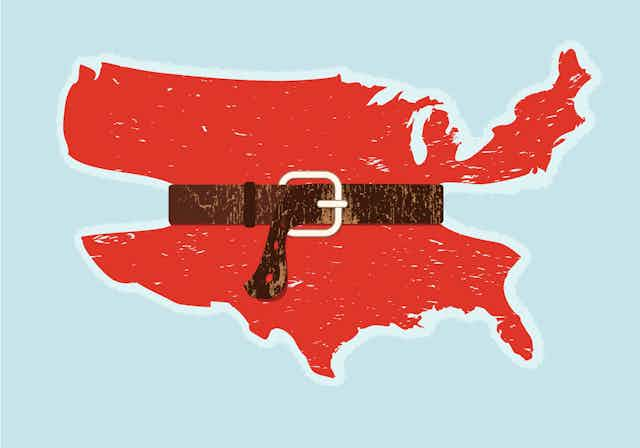Charitable giving in the U.S. fell to US$499 billion in 2022, as donors dealt with their losses in the stock market and coped with 40-year high inflation rates.
For only the fourth time on record, Americans gave less than they did the previous year without accounting for inflation, according to the newest annual Giving USA report. The research, released by the Giving USA Foundation, in partnership with the Indiana University Lilly Family School of Philanthropy, found that total giving fell 10.5% in inflation-adjusted terms, the steepest decline since the Great Recession of 2007-2009. Giving in nominal dollars, without that adjustment, dropped by 3.4%.
Giving declined across the board with lower levels of donations from individuals, foundations, the estates of deceased donors, and corporations – when accounting for inflation.
As an economist with over 20 years of experience in analyzing this data and two of the report’s lead researchers, we find that three factors lead to these rare results: the comparative strength of giving in prior years, U.S. economic conditions and inflation. Giving to nearly every kind of charity fell in 2022.
Giving dropped from a record high
Giving in 2021 was even stronger than we first estimated, reaching $517 billion that year, surpassing half a trillion dollars for the first time. This revision was based primarily on updates that the U.S. government makes to tax data – an annual practice.
In 2021, individual donors, foundations and corporations were motivated to respond to the COVID-19 pandemic. That all-time high for U.S. giving was facilitated by the stock market’s strong performance, which began in late 2020, and robust economic growth.
The large total amount that Americans gave to charity in 2021, which followed another strong year in 2020, helps to explain why giving declined so much in 2022. Donations fell in 2022 from unusually high levels reached when Americans responded to needs that arose due to the pandemic and calls for social justice.
Donors at all income levels likely scaled back
Individual donors, who comprise the largest share of giving, gave $319 billion in 2022 – 13.4% less than they did in the previous year after adjusting for inflation. Unlike in recent years, when market gains boosted the net worth of wealthy Americans, the stock market fell in 2022 by more than any year since 2008, reducing the net worth of many U.S. households.
Rich people typically give less to charity when the stock market suffers. That held true in 2022, according to multiple sources.
Despite declines in the stock market, the job market in 2022 was strong – which can be a good sign for the financial stability of less affluent households. Employment levels rose, with the jobless rate dipping to about 3.5%.
Wages also grew in 2022; however, that growth did not keep up with inflation. Instead, many Americans were forced to use their savings to stay on top of their bills, as they paid more for food, housing and other expenses.
The Giving USA data shows that people give about 2% of their disposable personal income – the money available after they pay taxes – to charity. Because inflation-adjusted disposable personal income fell by more than 6% in 2022, Americans had less money to give away.
Inflation eroded the value of all gifts
U.S. inflation soared to a rate that peaked at about 9% in June 2022, the highest rate since the early 1980s.
Americans had grown accustomed to far lower levels of inflation, which averaged a bit below 3% in the 40 years prior to 2022.
As a consequence, donors may not have taken into account the fact that annual gifts simply did not go as far in 2022 as they did in 2021. If you gave your local food pantry $100 in 2021 and then did the same in 2022, you might think that your giving didn’t change. But in a year of high inflation rates, that seemingly steady donation was actually a smaller gift in terms of what the food pantry could do with the money.
Foundations and corporations also gave less than they did the year before, and bequests from the estates of people who have died also declined after adjusting for inflation.
Similarly, giving to nearly all of the nine categories that Giving USA tracks fell in 2022 in inflation-adjusted dollars.
One of the two exceptions was gifts to foundations, which grew 1.9%. This small uptick was probably caused by one or two large gifts to new or existing foundations.
We also saw some promising signs. For example, giving for international causes grew by 2.7%, likely driven by support for Ukraine following Russia’s attack. This is in keeping with another pattern in the data: Americans give charitably as a way to address pressing issues. In the Great Recession, Americans increased giving to support basic social services, such as gifts to food banks, even when overall giving declined.
Finally, it is important to acknowledge that giving did remain close to record levels in 2022, at nearly $500 billion for the year. As the report observes, giving eventually bounces back from declines, even when adjusting for inflation.

